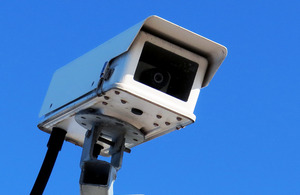Surveillance camera code of conduct is laid
New guidance to be put in place over police and local authority use of CCTV and Automatic Number Plate Recognition.

CCTV cameras will be subject to the new code
Public authority use of surveillance cameras will be subject to a new code of practice published by the Home Office today.
The code will set out new guidelines for CCTV and Automatic Number Plate Recognition (ANPR), encourage transparency in their use and ensure public bodies such as local authorities and the police consider whether they are proportionate before erecting new cameras.
It follows Andrew Rennison’s appointment as the first Surveillance Camera Commissioner last year.
The commissioner’s role is to encourage all operators to comply with the code, review how the code is used in practice and provide advice and information about it.
Surveillance by consent
The principle of surveillance by consent is at the heart of the new legislation – meaning the public can be confident cameras are not there to spy on them but to protect them.
Minister for Criminal Information Lord Taylor of Holbeach said:
CCTV and ANPR are crucial tools for cutting crime and protecting the public, but for too long we have seen these systems grow without proper oversight.
Through this code - and with an independent commissioner - there will be a framework in place for the first time that helps police and local authorities in the fight against crime and anti-social behaviour, while reassuring the public that cameras in public places are used proportionately and effectively.
The surveillance camera code of practice, which has been laid before Parliament for approval, is part of the Protection of Freedoms Act 2012.